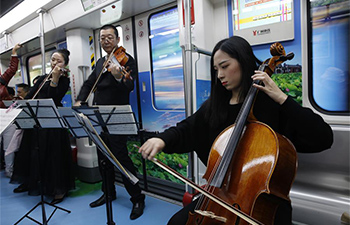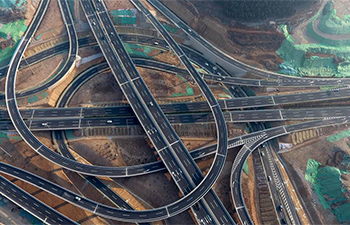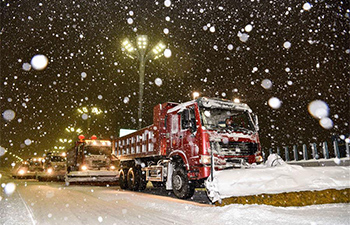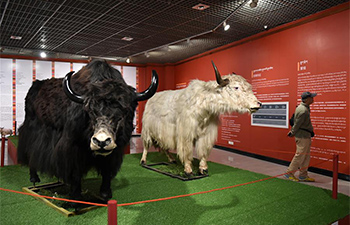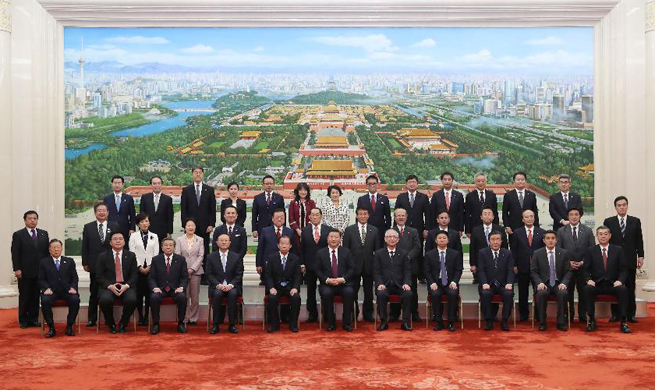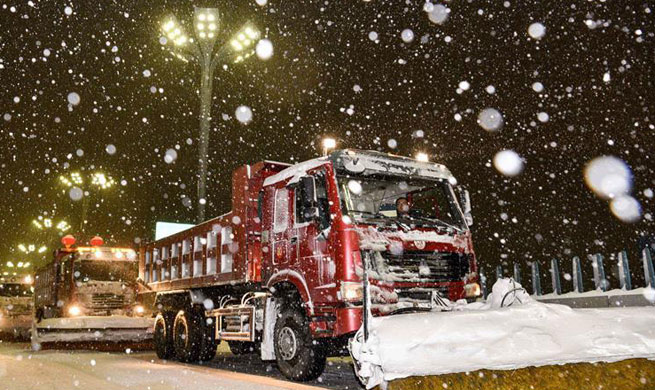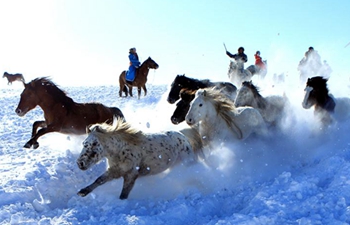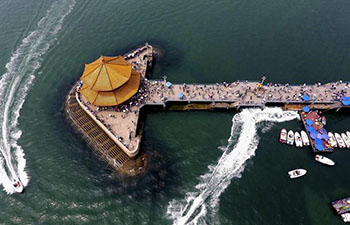by Alessandra Cardone
MILAN, Dec. 27 (Xinhua) -- In the heart of Milan, Italy's modern and running-fast economic capital, there is a gem local people sometimes call the "time machine."
It is not a reference to any high-tech invention, as one may imagine, nor to any futuristic device. It is the Dominican Church and Convent of Santa Maria delle Grazie, lying in a small medieval square not far from the city center, where an ancient masterpiece has been enshrined and preserved for more than five centuries.
On the north wall of the convent's refectory -- protected behind a series of airtight doors -- visitors can reach "The Last Supper" by Renaissance Maestro Leonardo Da Vinci.
This is the first and most relevant among Italy's 48 cultural sites enlisted by UNESCO as World Heritage -- included since 1980 -- and one of the most famous paintings in the world.
One major goal of the experts managing the museum is to preserve The Last Supper from decay, considering that the painting -- extremely fragile due to the technique used by Leonardo -- has started deteriorating a few years after being finished.
"In our display case (the refectory) -- which somebody calls a time-machine -- air pollution is virtually absent, there is no fine dust," museum director Chiara Rostagno told Xinhua.
"Every day, we work in cooperation with eight universities in order to keep preserving it, and to try to pass this masterpiece to the next generations."
Painted between 1494 and 1498, the Last Supper marked a "new era" in the history of art.
Rostagno, 47, a Conservation of Architectural Heritage and Museology professor with the Politecnico University in Milan, explained the painting is still in extraordinary conditions, considering its great fragility.
"This is a proof of five centuries of efforts, because the first signs of wear and tear were documented since 1517," she stressed.
Unlike all of the previous paintings on this theme, Leonardo chose to represent the moment immediately after Jesus announces his betrayal by Judas.
Judas has yet to be identified, however, and is depicted still sitting among the other apostles. This is also a big iconographic novelty; no painter had ever done that before.
Leonardo shows what happens immediately after Jesus says "One of you will betray me": the painting is all about reactions of the apostles in hearing the unsettling words.
Here is where the universality of Leonardo da Vinci's message would lie: "It is in the expressive capacity of the bodies and the faces depicted," Rostagno explained.
"This universal language is the very reason why Leonardo has been able to 'speak' to people of any culture and any time for more than five centuries."
The faces, the gazes and the gestures of the hands... each detail is meant to reveal the "movements of the soul."
Leonardo's clever use of perspective also helps visitors to feel part of the scene. It looks like the actual refectory of the convent would stretch out to include the banquet food and the table in the painting, or vice versa.
Then, there is the experimental technique: The Last Supper is not a "fresco" because such method would have required a very fast execution, since the paint must be given on wet plaster. Rather, the Renaissance artist tried a "dry" technique, similar to that used for painting on panels, which allowed him to work very slowly.
"This is the most innovative aspect under a technical point of view," the director said. "Thanks to that, Leonardo was able to achieve the best effects of light and shade -- obtaining the so-called "sfumato" (blending colors) that will be indeed named after him -- plus an extraordinary precision in the stroke."
An average 470,000 people come to see The Last Supper every year and, in order to preserve it from pollution, each visitor must walk through the series of air-filtration chambers to let fine dust behind. Meanwhile, a massive flow of purified air is introduced in the refectory hall every hour.
Booking is mandatory, and visits are carried out in groups of no more than 25 people. Foreigners already represent some 50 percent to 70 percent of all visitors, depending on the period of the year, according to museum data.
Japan and South Korea are the top countries of origin in Asia, but Chinese are on the rise, although many of them are students and workers already living in Italy or elsewhere in Europe.
To boost the direct influx from China's mainland, the director said, the museum management has been considering cooperation agreements with China's top tour operators.






